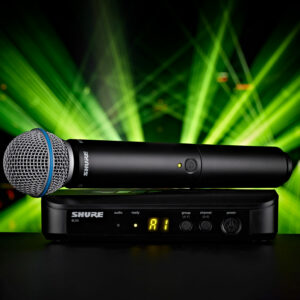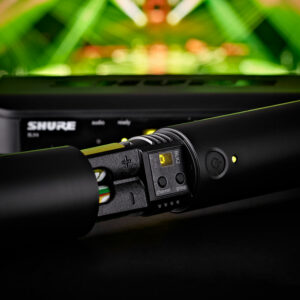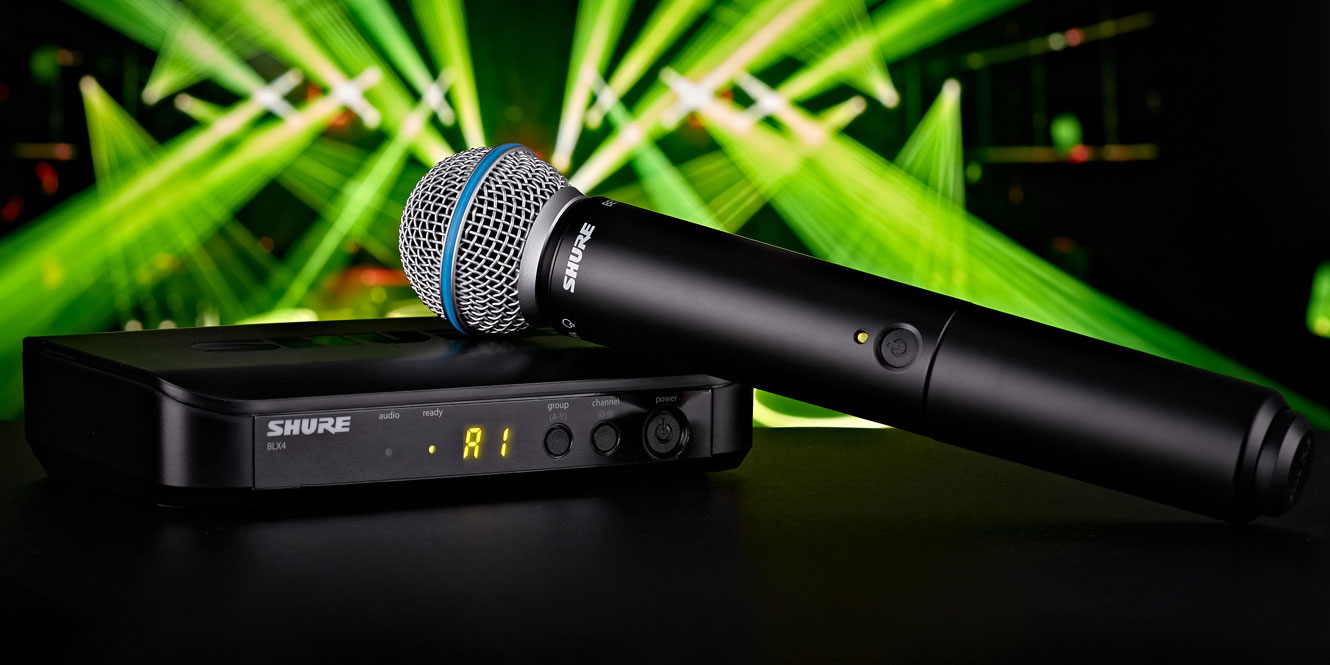If you’re planning on taking your live show to the next level, you might want to invest in a wireless microphone system.
Performers can often feel restricted when using wired microphones. Wireless mics offer the freedom they need to perform how they want.
But how do wireless microphone systems work? And how will knowing how they work help you pick the right system for you?
In a nutshell, how do wireless systems work?
Wireless microphone systems are great for upgrading your stage show. But to the novice, they might seem a bit daunting.
UHF what? Transmitter and receivers? Mega hertz? What’s all that about?
Let’s take a step back for a second – it’s really not that complicated when you strip it back to a basic level.
A wireless microphone system consists of a transmitter and a receiver.
The transmitter receives an audio signal and then processes it through air with ultra-high frequency modulation.
The receiver then listens for this modulated signal and demodulates it. This gives you the original audio signal, which can then be played back in real-time.
Simple right? Let’s dive a little deeper.
How do analogue transmitters work?
 I’ve mentioned that transmitters use modulation to send an audio signal over air – but what does this mean?
I’ve mentioned that transmitters use modulation to send an audio signal over air – but what does this mean?
Analogue transmitters use ultra-high frequencies (UHF) to transmit audio signals wirelessly to receivers. Since the UHF spectrum is so high, we can’t perceive it, making it great for sending wireless signals.
In the UHF range, there’s a low level of frequency chatter called the noise floor, which comes from devices like televisions. The transmitter generates a powerful centre frequency at a specified megahertz level that punches above this noise floor.
An incoming audio signal is taken by the transmitter and used to modulate this centre frequency – put more simply, it moves the signal left and right really quickly. This creates an image of the audio signal that can then be sent over air.
The receiver listens for the specified centre frequency, then demodulates it, ending up with the original audio signal that was transmitted.
Because of the way frequency transmission works, you need different centre frequencies to transmit different audio signals. And this needs to be organised carefully to avoid interference between them.
What is frequency coordination?
 Coordinating wireless frequencies? That sounds like a nightmare!
Coordinating wireless frequencies? That sounds like a nightmare!
Luckily manufacturers of wireless microphone systems have made it easy to achieve this without you having to think too much.
Most wireless systems offer a number of selectable groups and each of these has a number of channels.
The frequency of each channel within a group is precalculated by the manufacturer to avoid interference as much as possible.
If you’re using multiple wireless transmitters, always make sure they’re within the same group. A common mistake from beginners is to use different groups.
The more advanced a system, the more groups and channels it will give you. This is worth looking into, depending on the size of your venue.
For more advanced frequency coordination, many manufacturers allow you to manually adjust the transmission frequency either via the system or software.
This is useful if you have a much bigger and more complicated system.
How does digital compare?
A lot of systems now use digital transmission.
This generally provides better audio quality than analogue systems because the signal has to be compressed less. They might be more expensive, however, but they can be worth it.
And because it uses a front-end signal, intermodulation is much less of a problem. You can have multiple systems running with less worry about interference in this case.
You’ll also get much better-quality audio. So if you want nearly-perfect audio, you should go for a digital system.
But analogue systems still have their advantages. They’re less likely to have latency issues and have the capability to be much more expandable.
So really it’s up to you to decide what type of system is right for you. It’s worth taking a deep dive into the different specifications provided.
Wireless licensing
Wireless licencing is a big subject. But luckily, it’s not that complicated to understand.
In the UK, there are a number of different frequency bands you’re allowed to operate in – designated as channels.
The one specifically made for wireless microphones is Channel 38 but you can also choose to operate in a range of other different channels. However, you’ll have to buy licenses for these. So before you get a system, check it’s in an acceptable bandwidth.
If you don’t want to have any licensing to deal with, you could use digital 2.4gHz systems. These avoid any licensing headaches but you might not have as much expandability/reliability as the other frequency bandwidths. For example, you can buy a license for a specific channel, stopping other people from using it. You can’t do that with a WiFi transmitter.
This differs across countries. So if you’re touring, make sure to check the system you’re buying will be acceptable. Our wireless system product pages have wireless maps, and these clearly show what’s acceptable in which country.
Top tips
When it comes to wireless mic systems, the best thing to do is to invest in a good system as you’re guaranteed a much better sound. Simple!
It’s also worth getting a reliable set of antennae – the basic ones that come with your system might not do the job. If you’re in a bigger venue, it’s worth looking into omnidirectional antennae or powerful directional antennae.
In addition, you should make sure to get the right number of groups and channels that you need for your particular system. I’d say this is the most important thing to consider when deciding between a cheaper and more expensive system.
And finally – don’t overthink it! Wireless systems are easy to operate. And the more premium systems are specially designed so you can get going, straight out of the box.
Want to find out more about wireless systems?
- Check out the differences between all of the Sennheiser wireless systems
- Read our ultimate Guide to Shure Wireless Systems
- Have a look at the Best Wireless Microphone Systems for singers













0 Comments